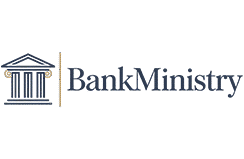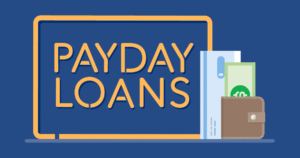Why Finding the Best Savings Account in 2025 Matters
In 2025, with economic uncertainty driven by shifting policies and inflation concerns, choosing the best savings account in the USA is more critical than ever. Savings accounts are a cornerstone of financial planning, offering a safe, liquid way to store funds for emergencies, short-term goals, or future investments. Unlike riskier options like stocks, savings accounts are protected by FDIC or NCUA insurance up to $250,000 per depositor, ensuring your money is secure. However, not all savings accounts are created equal. The difference between a standard savings account earning 0.01% annual percentage yield (APY) and a high-yield savings account (HYSA) offering 5.00% APY can mean hundreds or thousands of dollars in interest over time.
For example, $10,000 in a traditional savings account at 0.01% APY earns just $1 annually, while the same amount in a 5.00% HYSA earns $500. This gap is why savers across the USA are turning to HYSAs, especially those offered by online banks, which consistently outpace traditional banks like Bank of America (0.01%–0.04% APY) or U.S. Bank (up to 3.50% APY). The Federal Reserve’s steady benchmark rate of 4.25%–4.50% as of July 2025 supports these high yields, but with potential rate cuts looming, now is the time to lock in the best rates.
This comprehensive guide analyzes data from trusted sources, including Investopedia, Fortune, Bankrate, and major banks, to help you identify the best savings accounts in the USA for 2025. We’ll explore why high-yield accounts are essential, compare top options, and provide practical steps to choose the right account for your needs. Whether you’re building an emergency fund, saving for a home, or planning for retirement, this article will empower you to maximize your savings.
The “What” and “Why” of High-Yield Savings Accounts
What Is a High-Yield Savings Account?
A high-yield savings account (HYSA) is a deposit account that offers significantly higher APYs than traditional savings accounts, often 10–20 times the national average of 0.38%–0.59% (as reported by Fortune and Bankrate in July 2025). These accounts are typically offered by online banks or credit unions, which have lower overhead costs due to the absence of physical branches. This allows them to pass savings onto customers in the form of higher interest rates, often ranging from 4.00% to 5.00% APY.
HYSAs are FDIC-insured (for banks) or NCUA-insured (for credit unions) up to $250,000, making them as safe as traditional savings accounts. They offer liquidity, allowing withdrawals (often up to six per month) without penalties, unlike certificates of deposit (CDs). Interest is usually compounded daily or monthly and credited monthly, boosting earnings over time. For instance, $5,000 at 4.50% APY with daily compounding grows to $5,225.06 in one year, compared to $5,000.50 at 0.01% APY.
Why Are High-Yield Savings Accounts Essential in 2025?
The Federal Reserve has maintained its benchmark rate at 4.25%–4.50% since December 2024, creating a favorable environment for high APYs. Investopedia notes an 80%+ chance of no rate cuts until at least September 17, 2025, while Fortune and Bankrate confirm stability through July 29–30, 2025. This stability makes HYSAs an attractive option for earning competitive returns without the risks of stocks or bonds.
Inflation, at 2.4% as of March 2025 (Bankrate), is outpaced by top HYSAs (4.00%–5.00% APY), preserving purchasing power. For example, a 4.50% APY yields a real return of 2.1% after inflation, compared to a negative real return (-2.39%) for a 0.01% APY account. Economic uncertainties, such as President Trump’s tariff policies (Investopedia, Fortune), underscore the need for a liquid emergency fund, which HYSAs support due to their accessibility and high yields.
Traditional banks like Bank of America (0.01%–0.04% APY) and U.S. Bank (0.05%–3.50% APY) offer lower rates, often with monthly fees ($5–$8, waivable), making HYSAs a better choice for maximizing returns. However, HYSAs are typically online-only, lacking branch access, which may be a trade-off for some savers.
Top High-Yield Savings Accounts for 2025
Based on data from Investopedia, Fortune, and Bankrate, here are some of the best high-yield savings accounts in the USA for 2025, focusing on APYs, fees, minimums, and features.
Varo Bank (Varo Money): 5.00% APY
- Overview: Consistently ranked as a top performer by Investopedia and Fortune, Varo Bank offers a 5.00% APY with no monthly fees or minimum balance requirements.
- Minimum Deposit: $0.
- Features: Online-only, FDIC-insured up to $250,000. Offers a mobile app with budgeting tools, round-up savings features, and no-fee overdraft protection (up to $50 for qualifying accounts). Six withdrawal/transfer limit per month.
- Pros: Highest APY available, no fees, no minimums, user-friendly digital platform.
- Cons: No physical branches, limited customer service hours (no Sunday support, per Bankrate).
- Best for: Savers seeking maximum returns with minimal requirements and comfortable with online banking.
HUSTL (Vantage West Credit Union): 5.00% APY
- Overview: Highlighted by Fortune, HUSTL offers a 5.00% APY, matching Varo Bank. As a credit union account, it’s NCUA-insured.
- Minimum Deposit: Typically low or none (varies by membership eligibility).
- Features: Online access, NCUA insurance up to $250,000, mobile banking with goal-setting tools. May require credit union membership (e.g., living/working in specific regions or joining an affiliated organization).
- Pros: Competitive APY, no/low fees, insured deposits.
- Cons: Membership requirements may limit accessibility, online-only.
- Best for: Those eligible for credit union membership seeking high yields.
Axos Bank: 4.66% APY
- Overview: Noted by Fortune, Axos Bank offers a 4.66% APY, slightly below the top tier but highly competitive.
- Minimum Deposit: $0.
- Features: Online-only, FDIC-insured, no monthly fees, unlimited ATM fee reimbursements for some accounts. Mobile app supports transfers and mobile check deposits.
- Pros: High APY, no fees, robust digital tools.
- Cons: No branches, variable rates subject to change.
- Best for: Tech-savvy savers wanting high yields and ATM access.
TAB Save (TAB Bank): ~4.15% APY
- Overview: Highlighted by Bankrate and Yahoo Finance, TAB Save offers a competitive APY (around 4.15%), with no fees or minimums.
- Minimum Deposit: $0.
- Features: Online-only, FDIC-insured, same APY across all balances. Offers high-yield checking and CDs, mobile app with transfers and budgeting tools.
- Pros: Consistent APY, no fees/minimums, versatile account options.
- Cons: Limited customer service (no Sunday support), no branches.
- Best for: Savers wanting a single bank for multiple high-yield accounts.
Other Notable HYSAs
- BrioDirect: 4.30% APY (Yahoo Finance), no fees, $25 minimum deposit, FDIC-insured.
- EverBank Performance℠ Savings: 4.30% APY, no fees, no minimum, FDIC-insured, robust digital platform (Bankrate).
- Bask Bank Interest Savings: 4.20% APY, no fees, no minimum, FDIC-insured, mobile check deposit (Bankrate).
- Pibank: 4.60% APY, online-only, FDIC-insured (Fortune).
- ROGER: 4.65% APY, online-only, FDIC-insured (Fortune).
Comparing HYSAs to Traditional Savings Accounts
Bank of America Advantage Savings
- APY: 0.01%–0.04% (with Preferred Rewards tiers: Gold 0.02%, Platinum 0.03%, Platinum Honors/Diamond 0.04%).
- Minimum Deposit: $100.
- Monthly Fee: $8, waivable with $500 daily balance, $250 monthly deposit, Preferred Rewards, or minor account owner.
- Features: FDIC-insured, 3,800 branches, 15,000 ATMs, mobile app with Erica (AI assistant), Keep the Change® round-ups, BankAmeriDeals® cashback.
- Pros: Extensive branch/ATM access, robust digital tools, fee waivers for loyal customers.
- Cons: Extremely low APYs, high minimum balance for fee waiver compared to HYSAs.
- Best for: Savers needing in-person banking and already integrated with Bank of America.
U.S. Bank Bank Smartly® Savings
- APY: 0.05% (standard), up to 3.50% with Combined Qualifying Balances (CQB) and linked accounts.
- Minimum Deposit: $25.
- Monthly Fee: $5, waivable with linked checking, Safe Debit, Visa Signature card, or minor under 18.
- Features: FDIC-insured, branch access, highly rated mobile app, Smart Rewards® program, no ATM fees at U.S. Bank ATMs.
- Pros: Competitive APY for a traditional bank (with relationships), low minimum, strong digital tools.
- Cons: Lower APY than HYSAs, high CQB needed for 3.50% APY.
- Best for: Those with U.S. Bank relationships or needing branch access.
Key Differences
- APY: HYSAs (4.00%–5.00%) far outpace traditional banks (0.01%–3.50%), offering 10–20 times the national average (0.38%–0.59%).
- Fees/Minimums: HYSAs often have no fees or minimums (e.g., Varo, Axos), while traditional banks charge $5–$8 (waivable) and require $25–$100 minimums.
- Accessibility: Traditional banks offer branches and ATMs, ideal for in-person banking, while HYSAs are online-only, relying on digital platforms and occasional ATM access.
- Features: HYSAs focus on yield and simplicity, while traditional banks offer integrated services (e.g., checking, loans, rewards programs).
How to Choose the Best Savings Account in 2025
Step 1: Define Your Savings Goals
Your savings goals determine the best account type:
- Emergency Fund: HYSAs (e.g., Varo, Axos) are ideal due to liquidity and high APYs. Aim for 3–6 months of expenses ($10,000–$30,000 for most households).
- Short-Term Goals (e.g., vacation, home down payment): HYSAs offer flexibility, while short-term CDs (e.g., Bank of America’s 7-month Featured CD at 4.80%) provide fixed rates.
- Retirement: U.S. Bank’s Retirement Money Market (no fees, tax advantages) or Bank of America’s IRA CDs are better for long-term, tax-advantaged savings.
Step 2: Compare APYs and Fees
- Prioritize High APYs: Choose accounts with 4.00%+ APY (e.g., Varo 5.00%, Axos 4.66%) to maximize earnings. Use an interest calculator to estimate returns: $10,000 at 5.00% APY earns $500/year, vs. $4 at 0.04% (Bank of America).
- Avoid Fees: Opt for no-fee accounts (e.g., TAB Save, EverBank) or ensure you meet fee waiver conditions (e.g., $500 balance for Bank of America).
- Check Minimums: Most HYSAs have no minimums, while traditional banks require $25–$100.
Step 3: Evaluate Accessibility
- Online Banking: HYSAs offer robust mobile apps (e.g., Varo, Bask Bank) with features like mobile check deposit, budgeting tools, and automatic transfers. Ensure the app is user-friendly and secure.
- Branch/ATM Access: If you need in-person services, consider U.S. Bank or Bank of America, but accept lower APYs. For HYSAs, check for ATM fee reimbursements (e.g., Axos).
- Transfer Speed: Online banks may take 1–2 days for external transfers, so plan withdrawals accordingly.
Step 4: Verify Safety
- Ensure the account is FDIC-insured (banks) or NCUA-insured (credit unions) up to $250,000 per depositor, per ownership category. All accounts listed (Varo, HUSTL, Bank of America, U.S. Bank) meet this standard.
- Check the institution’s reputation via customer reviews or ratings on platforms like Bankrate or Trustpilot.
Step 5: Consider Additional Features
- Digital Tools: Look for budgeting tools, round-up savings (e.g., Bank of America’s Keep the Change®), or goal-setting features (e.g., U.S. Bank’s mobile app).
- Account Integration: Traditional banks offer linked checking/savings for fee waivers and overdraft protection (e.g., U.S. Bank, Bank of America).
- Membership Requirements: Credit union HYSAs (e.g., HUSTL) may require eligibility (e.g., geographic or organizational ties).
Practical Applications: How to Maximize Your Savings
Building an Emergency Fund
An emergency fund of 3–6 months’ expenses is critical in 2025, given economic uncertainties like tariff policies (Investopedia). A HYSA like Varo’s 5.00% APY is ideal:
- Example: For $20,000 (6 months’ expenses), Varo earns $1,000/year vs. $2 at Bank of America’s 0.01% APY.
- Strategy: Set up automatic monthly transfers (e.g., $500) to your HYSA. Use budgeting tools to track progress.
Saving for Short-Term Goals
For goals like a wedding or car purchase within 1–3 years, HYSAs offer flexibility:
- Example: Saving $15,000 for a car in 2 years at 4.66% APY (Axos) earns $1,425 in interest, vs. $12 at Bank of America’s 0.04%.
- Strategy: Use round-up features (e.g., Bank of America’s Keep the Change®) or goal-setting tools (e.g., EverBank) to boost savings.
Retirement Planning
For long-term savings, consider tax-advantaged accounts:
- U.S. Bank Retirement Money Market: No fees, low minimum ($100 or $25 with auto-deposits), tax advantages. Rates are competitive but likely below 5.00%.
- Bank of America IRA CDs: Offer Roth/Traditional options with fixed rates (up to 4.80% for 7-month Featured CDs). Suitable for locking in returns.
- Strategy: Contribute the 2025 IRA limit ($7,000, or $8,000 if 50+) to an IRA CD or money market for tax benefits. Consult a financial advisor to ensure alignment with retirement goals.
Sample Savings Plan
Here’s a practical plan for a family saving $30,000 for a home down payment in 3 years:
- Account: Varo Bank HYSA (5.00% APY, no fees, no minimum).
- Monthly Contribution: $800/month via automatic transfers.
- Earnings: After 3 years, $30,000 grows to $32,550.62 with daily compounding, vs. $30,036 at Bank of America’s 0.04% APY.
- Tools: Use Varo’s budgeting app to track spending and ensure consistent deposits.
Broader Context: Factors Influencing Savings Decisions in 2025
Economic Environment
The Federal Reserve’s steady 4.25%–4.50% rate supports high APYs, but potential cuts in late 2025 could lower yields (Investopedia, Bankrate). Inflation at 2.4% is outpaced by HYSAs, but rising costs (e.g., due to tariffs) may increase financial pressure. HYSAs provide a safe, high-yield option for maintaining purchasing power.
Lifestyle and Financial Goals
- Young Professionals: HYSAs like Axos or TAB Save suit tech-savvy savers building emergency funds or saving for milestones (e.g., travel, weddings).
- Families: Traditional banks like U.S. Bank or Bank of America offer integrated accounts for budgeting and overdraft protection, but lower APYs may not suit aggressive savers.
- Retirees: Tax-advantaged accounts (e.g., U.S. Bank Retirement Money Market, Bank of America IRA CDs) provide stability and modest returns for fixed-income needs.
Technological Trends
Online banks dominate HYSAs due to low costs, offering mobile apps with features like:
- Budgeting Tools: Track spending and savings goals (e.g., Varo, U.S. Bank).
- Round-Ups: Automatically save spare change (e.g., Bank of America’s Keep the Change®).
- Mobile Check Deposit: Deposit checks remotely (e.g., Bask Bank, EverBank).
Risks to Consider
- Variable Rates: HYSAs’ rates can drop if the Fed lowers rates. Monitor FOMC announcements (next meeting: July 29–30, 2025).
- Inflation: If inflation exceeds APYs, purchasing power declines. HYSAs currently outpace 2.4% inflation, but long-term risks remain.
- Taxable Interest: HYSA earnings are taxable, reducing net returns. Factor this into savings calculations.
Safety Precautions and Common Mistakes to Avoid
Safety Precautions
- Verify Insurance: Always confirm the bank is FDIC-insured or the credit union is NCUA-insured up to $250,000. Check via the FDIC’s BankFind tool or NCUA’s website.
- Secure Online Banking: Use strong passwords, enable two-factor authentication, and avoid public Wi-Fi for transactions to protect against fraud.
- Monitor Rate Changes: Variable rates can fluctuate. Regularly check your account’s APY and compare it to competitors (e.g., via Bankrate or Fortune).
- Consult a Financial Advisor: For large balances or complex goals (e.g., retirement), seek professional advice to ensure optimal allocation.
Common Mistakes to Avoid
- Choosing Low-Yield Accounts: Sticking with traditional banks’ low APYs (e.g., Bank of America’s 0.01%) sacrifices significant earnings. Compare rates before opening an account.
- Ignoring Fees: Monthly fees ($5–$8 at traditional banks) erode returns. Opt for no-fee HYSAs or meet waiver conditions.
- Exceeding Withdrawal Limits: Most HYSAs limit withdrawals to six per month. Exceeding this may incur fees or account conversion to non-interest-bearing status.
- Not Diversifying: Don’t put all funds in one account. Keep a small amount in a traditional bank for immediate access and the rest in a HYSA for higher yields.
- Overlooking Membership Requirements: Credit union HYSAs (e.g., HUSTL) may require eligibility. Verify requirements before applying.
Comparing HYSAs to Other Low-Risk Options
Certificates of Deposit (CDs)
- APYs: Up to 4.80% (Bank of America 7-month Featured CD) or 4.60% (Investopedia, Fortune). Fixed rates ensure stability but require locking funds.
- Pros: Guaranteed returns, FDIC/NCUA insurance.
- Cons: Early withdrawal penalties (e.g., 90–365 days’ interest at Bank of America), less liquidity than HYSAs.
- Best for: Savers with fixed timelines willing to sacrifice liquidity.
Money Market Accounts (MMAs)
- APYs: Up to 4.37% (Investopedia), slightly below top HYSAs.
- Features: Combine savings (interest) and checking (debit card, check-writing). U.S. Bank’s Elite Money Market offers tiered rates and ATM access.
- Pros: More access than CDs, FDIC/NCUA insurance.
- Cons: Lower APYs than HYSAs, often require higher minimums (e.g., $10,000 to waive fees).
- Best for: Those needing checking-like features with modest returns.
U.S. Treasuries
- Yields: Up to 4.85% (Investopedia), fixed for the term.
- Pros: Backed by the U.S. government, tax-exempt at state level.
- Cons: Less liquid than HYSAs, requires purchasing through brokers or TreasuryDirect.
- Best for: Conservative investors with longer horizons.
Brokerage Cash Management Accounts
- Yields: Up to 4.85% (Investopedia), variable rates.
- Pros: Integration with investment accounts, FDIC insurance (if held at insured banks).
- Cons: May have fees or minimums, less focus on savings-specific features.
- Best for: Investors wanting cash reserves within brokerage platforms.
Case Studies: Real-World Savings Scenarios
Case Study 1: Emergency Fund for a Young Professional
- Profile: Sarah, 28, single, earns $60,000/year, wants a 6-month emergency fund ($18,000).
- Account: Varo Bank HYSA (5.00% APY, no fees/minimums).
- Plan: Deposits $500/month for 3 years. Total contribution: $18,000. Interest earned: $1,385. Total balance: $19,385.
- Outcome: Sarah’s fund grows significantly vs. Bank of America’s 0.04% APY ($18,108 after 3 years). Varo’s app helps her track expenses and automate savings.
Case Study 2: Family Saving for a Home
- Profile: The Johnsons, 35 and 37, combined income $120,000, saving $40,000 for a home down payment in 4 years.
- Account: Axos Bank HYSA (4.66% APY, no fees, ATM reimbursements).
- Plan: Deposits $833/month for 4 years. Total contribution: $39,984. Interest: $3,870. Total: $43,854.
- Outcome: Axos outperforms U.S. Bank’s 3.50% APY ($42,880), with ATM access for occasional withdrawals.
Case Study 3: Retiree Preserving Capital
- Profile: Robert, 65, retired, wants $50,000 in safe, liquid savings.
- Account: U.S. Bank Retirement Money Market (no fees, tax advantages, ~3.00% APY estimated).
- Plan: Deposits $50,000 lump sum. Interest: $1,500/year. Tax advantages reduce liability.
- Outcome: U.S. Bank’s branch access and no-fee structure suit Robert’s needs, though a HYSA like TAB Save (4.15% APY, $2,075/year) would earn more.
Read more – SBA loan guide
Frequently Asked Questions
What is the best high-yield savings account in the USA for 2025?
Varo Bank and HUSTL (Vantage West Credit Union) offer the highest APY at 5.00%, with no fees or minimums, making them top choices for maximizing returns. Axos Bank (4.66%) and TAB Save (4.15%) are also competitive. Choose based on your preference for digital tools, ATM access, or credit union eligibility.
Are high-yield savings accounts safe?
Yes, HYSAs are safe if offered by FDIC-insured banks (e.g., Varo, Axos) or NCUA-insured credit unions (e.g., HUSTL) up to $250,000 per depositor, per ownership category. Verify insurance status via the FDIC’s BankFind tool or NCUA’s website.
Should I choose an online bank or a traditional bank for my savings?
Online banks (e.g., Varo, TAB Save) offer higher APYs (4.00%–5.00%), no fees, and robust digital tools but lack branches. Traditional banks like U.S. Bank (up to 3.50% APY) and Bank of America (0.01%–0.04%) provide branch access but lower rates and fees ($5–$8, waivable). Choose online for yield, traditional for in-person services.
How do I avoid fees on savings accounts?
Opt for HYSAs with no fees (e.g., Varo, EverBank) or meet fee waiver conditions at traditional banks (e.g., $500 balance for Bank of America, linked checking for U.S. Bank). Read account terms to confirm requirements.
Disclaimer: This content is for informational purposes only. Always consult a qualified financial advisor for personalized financial advice and decisions.



